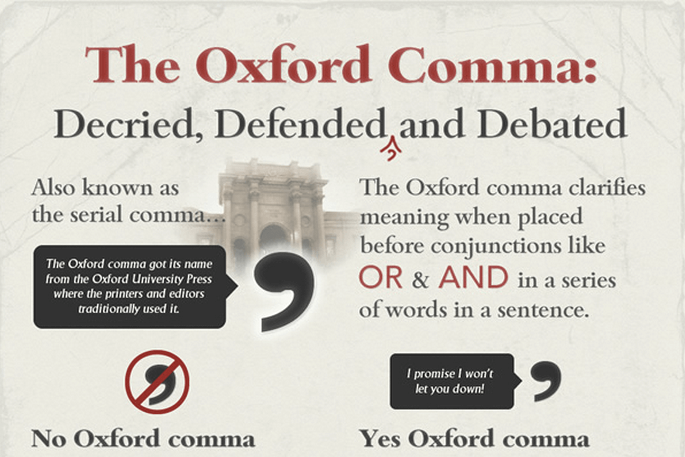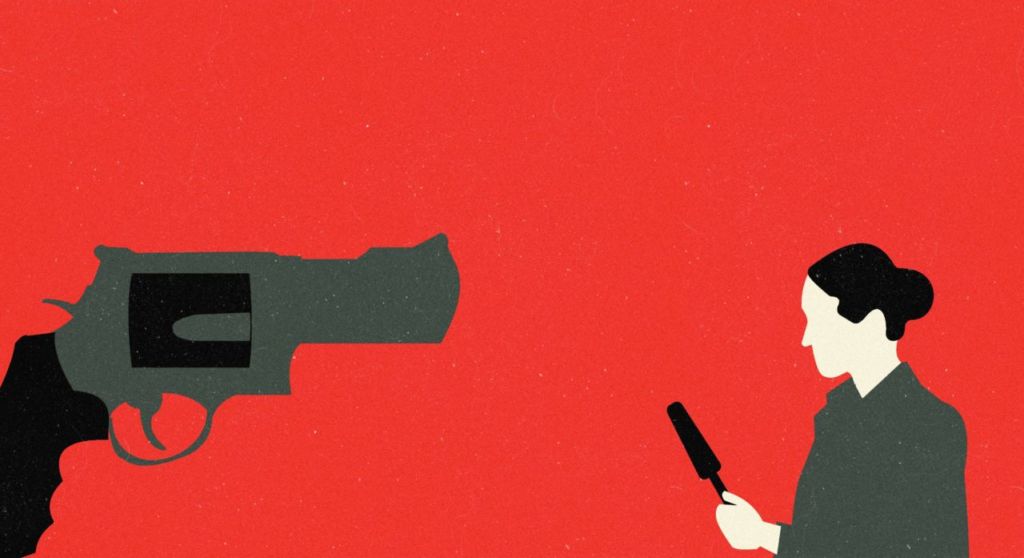Join us: facebook.com/unitedhumanists
White Supremacist Ideas Have Historical Roots In U.S. Christianity.
When a young Southern Baptist pastor named Alan Cross arrived in Montgomery, Ala., in January 2000, he knew it was where the Rev. Martin Luther King, Jr. had his first church and where Rosa Parks helped launched the famous bus boycott, but he didn’t know some other details of the city’s role in civil rights history.
The more he learned, the more troubled he became by one event in particular: the savage attack in May 1961 on a busload of Black and white Freedom Riders who had traveled defiantly together to Montgomery in a challenge to segregation. Over the next 15 years, Cross, who is white, would regularly take people to the old Greyhound depot in Montgomery to highlight what happened that spring day.
“They pull in right here, on the side,” Cross said, standing in front of the depot. “And it was quiet when they got here. But then once they start getting off the bus, around 500 people come out – men, women and children. Men were holding the Freedom Riders back, and the women were hitting them with their purses and holding their children up to claw their faces.” Some of the men carried lead pipes and baseball bats. Two of the Freedom Riders, the civil rights activist John Lewis and a white ally, James Zwerg, were beaten unconscious.
Though he had grown up in Mississippi and was familiar with the history of racial conflict in the South, Cross was horrified by the story of the 1961 attack on the Freedom Riders. Montgomery was known as a city of churches. Fresh out of seminary, Cross had come there to preach the gospel of Jesus Christ.
“Why didn’t white Christians show up?” he recalled wondering.
To his dismay, Cross learned that many of the people in the white mob were regular churchgoers. In the years that followed, he made it part of his ministry to educate his fellow Christians about the attack and prompt them to reflect on its meaning.
“You think about the South being Christian, but this wasn’t Christianity,” Cross said. “So what happened here in the white church? How did we get to that point?” It’s a question he explored in his 2014 book, When Heaven and Earth Collide: Racism, Southern Evangelicals, and the Better Way of Jesus.
The answer to the question lies partly in U.S. history, beginning in the days of slavery and Jim Crow segregation, but not ending there. Elements of racist ideology have long been present in white Christianity in the United States.
Racism from the pulpit
Less than three weeks after the 1961 attack on the Freedom Riders, Montgomery’s most prominent pastor, Henry Lyon Jr., gave a fiery speech before the local white Citizens’ Council, denouncing the civil rights protesters and the cause for which they were beaten — from a “Christian” perspective.
“Ladies and gentlemen, for 15 years I have had the privilege of being pastor of a white Baptist church in this city,” Lyon said. “If we stand 100 years from now, it will still be a white church. I am a believer in a separation of the races, and I am none the less a Christian.” The crowd applauded.
“If you want to get in a fight with the one that started separation of the races, then you come face to face with your God,” he declared. “The difference in color, the difference in our body, our minds, our life, our mission upon the face of this earth, is God given.”
Lyon saw himself as a devout Bible believer, and he was far from an extremist in the Southern Baptist world. A former president of the Alabama Baptist Convention, his Montgomery church had more than 3,000 members.
How respected people of God could openly promote racist views was a question that would trouble many Southerners in the years that followed. Among them was a young woman growing up in East Texas in the 1970s, Carolyn Renée Dupont. The girl’s grandmother took her regularly to church, made her listen to sermons on the radio and gave her a quarter for every Bible verse she memorized. But the grandmother believed just as deeply in the superiority of the white race.
“I asked her about that once,” Dupont recalled, “and she said, ‘I just don’t believe Blacks should be treated the same as whites.’ ” Dupont, now a historian at Eastern Kentucky University, said the experience with her grandmother spurred her to focus her research on the racial views of Southern white evangelicals. “I wanted to understand what seemed like a central riddle about the South,” she said. “The part of the country that was the most fervent about religious faith was also the one that practiced white supremacy most enthusiastically.” It was the same question that bothered Cross as a young pastor in Montgomery.
Slavery and the Bible
At an earlier point in American history, some Christian theologians went so far as to argue that the enslavement of human beings was justifiable from a biblical point of view. James Henley Thornwell, a Harvard-educated scholar who committed huge sections of the Bible to memory, regularly defended slavery and promoted white supremacy from his pulpit at the First Presbyterian Church in Columbia, S.C., where he was the senior pastor in the years leading up to the Civil War.
“As long as that [African] race, in its comparative degradation, co-exists side by side with the white,” Thornwell declared in a famous 1861 sermon, “bondage is its normal condition.” Thornwell was a slave owner, and in his public pronouncements he told fellow Christians they need not feel guilty about enslaving other human beings.
“The relation of master and slave stands on the same foot with the other relations of life,” Thornwell insisted. “In itself, it is not inconsistent with the will of God. It is not sinful.” The Christian Scriptures, Thornwell said, “not only fail to condemn; they as distinctly sanction slavery as any other social condition of man.”
Among the New Testament verses Thornwell could cite was the Apostle Paul’s letter to the Ephesians where he writes, “Slaves, obey your human masters, with fear and trembling and sincerity of heart.” (Biblical scholars now discount the relevance of the passage to a consideration of chattel slavery.)
Thornwell’s reassurance was immensely important to all those who had a stake in the existing economic and political system in the South. In justifying slavery, he was speaking not just as a theologian but as a Southern patriot. In the First Presbyterian cemetery, Thornwell’s name appears prominently on a monument to church members who served the Confederate cause in the Civil War.
“Slavery, in the minds of many, was necessary for the South to thrive,” said Bobby Donaldson, director of the Center for Civil Rights History and Research at the University of South Carolina. “So Thornwell used his pulpit to defend the South against charges by the North, by abolitionists. … He provided the intellectual defenses that many slaveholders needed.”
Thornwell’s First Presbyterian congregation included slave owners and businessmen and other members of the political and economic elite in Columbia, and as their pastor he represented their interests. A belief in white supremacy was a foundational part of Southern culture, which is one reason some otherwise devout Christians have failed to challenge it.
The Southern way
Lyon’s opening prayer before the white Citizens’ Council meeting in Montgomery included words starkly reminiscent of the Civil War era. “We stand on the sacred soil of Alabama in the cradle of the Confederacy of our beloved Southland,” he said. “Help us to realize with all of the fervency of our heart and mind that every inch of ground we stand on tonight is sacred and honorable.”
A fear that their regional culture was at risk lay behind much of the opposition to the civil rights movement among Southern Christians. Cross, the Montgomery pastor who was dismayed by what he learned of the attack on the Freedom Riders, ultimately decided that the best explanation for the involvement of Christians was that they were acting on the basis of their perceived self-interest.
“People try to protect their way of life,” he said. “You know, ‘What’s best for me and my family?’ You even begin to use God as a means to an end. It makes a lot of sense to people, and they’re, like, ‘Well, that’s what everybody does.’ ”
A “don’t-rock-the-boat” philosophy can have a powerful appeal among people who are unnerved by the prospect of social change, and church leaders may feel powerless to counter it.
In 1965, Lyon’s more moderate son, Henry Lyon III, was called to lead an all-white Baptist church in Selma, Ala. He arrived in the city two months after the “Bloody Sunday” confrontation on the Edmund Pettus Bridge, when more than 2,000 civil rights marchers were savagely attacked by Alabama state troopers and local law officers. The younger Lyon, who died in 2018, never adopted his father’s bigoted rhetoric, and his wife, Sara Jane Lyon, said he was willing to open his church to African Americans. During the 21 years Lyon was the church’s pastor, however, his congregation never accepted Black members, apparently because he did not feel free to press the issue.
“Selma wasn’t ready for it,” Sara Jane Lyon told NPR in an interview. “He knew it would accomplish nothing if he upset everybody and pushed, you know, to integrate the church.”
Churches operate within a cultural context. By challenging local customs and perspectives, pastors may alienate the white economic and political players who serve as their deacons, elders, Sunday School teachers and financial supporters.
In his sermons, Sara Jane Lyon recalled, her husband would tell his congregation, “I have not come here to change your heart. There’s no way I can do that. … Only the Lord can change your heart.” Asked whether her husband ever discussed racial justice as a pastor, she said, “That was not his style of preaching. He didn’t get up and talk about local issues. He preached the Word of God.”
The church and the status quo
After leaving Selma, the Lyons relocated to Montgomery and joined the First Baptist Church there. With about 5,000 members, the church has a central place in civic life. The congregation is almost entirely white, but it’s not because of a deliberate policy. The pastor, Jay Wolf, said he welcomes everyone.
“When I came to know the Lord, I became colorblind,” Wolf said. When some visitors asked Wolf how many African Americans attended his church, he said he had “no idea.”
“I don’t know how many white members we have,” Wolf told NPR. “Like, does it make any difference? I just know that we have people, crafted in the image of God. I am completely resistant to this idea of breaking things down on a demographic basis. We are the body of Christ, and we need Jesus, and that’s all I need to know.”
On the other side of Montgomery, where African Americans are concentrated, Pastor Terrence Jones also preaches about needing Jesus, though with a message attuned to a multiracial congregation. The son of a Black Southern Baptist preacher, Jones said he thinks the Christian church is partly to blame for America “dropping the ball,” in his words, on race issues.
“The message of Jesus is a unifying message,” Jones said. “According to Ephesians 2, he tears down ‘every dividing wall of hostility’ through his death on the cross. I think we’ve done a poor job of showing the world that, because we’ve been so segregated.”
Jones argues that Christians need to focus on racism far more seriously.
“When people get shot, when our president says something racially charged, people get pushed into their corners, and they don’t wrestle with what does this mean for me as a minority, what does this mean for me as a white person, but also, what does this mean for me as a follower of Jesus?”
At the time of the civil rights movement, King argued that church leaders needed to take a broad view of their mission and accept responsibility for addressing social inequity. In his 1963 Letter From a Birmingham Jail, written in longhand from his jail cell, King lamented the failure of “white churchmen” to stand up for racial justice when it meant challenging the local power structure.
“So often the contemporary church is a weak, ineffectual voice with an uncertain sound,” King wrote. “So often it is an arch-defender of the status quo. Far from being disturbed by the presence of the church, the power structure of the average community is consoled by the church’s silent — and often even vocal — sanction of things as they are.”
A theology of inaction
Some white Christian leaders have even provided moral and theological reasoning for their reluctance to challenge the existing system. Evangelicals in particular generally prioritize an individual’s own salvation experience over social concerns. The primary mission of the church in this view is to win souls for Christ. Working for racial justice, in contrast, may be seen as a “political” issue.
“In that configuration, immorality only lives in the individual person,” said Dupont, the religion historian who grew up in Texas. “There’s no conception of systemic injustice and systemic sin.”
Civil rights activists who cited the Bible in support of their cause were often dismissed as “a bunch of theological liberals,” Dupont said. “And then it becomes an argument about who really believes the Bible. If Christianity is really about individual salvation, and the mission of the church is to win the lost, then [it is said that] these people who are telling us we need to get involved in the civil rights movement are just trying to lead us astray.”
The rejection of a “social gospel” remains popular among those conservative evangelicals today who see advocating for Black Lives Matter or immigrant rights as political activities. It is an argument with roots extending back to the theology of Thornwell and like-minded religion scholars of the 19th century.
“What, then, is the Church?” Thornwell asked in his 1851 Report on Slavery. “It is not, as we fear too many regard it, a moral institute of universal good whose business it is to wage war upon every form of human ill, whether social, civil, political or moral.”
Such pronouncements have made Thornwell popular among “orthodox” Christian theologians who rebel against liberal interpretations of the church’s mission in the modern world. Once his pronouncements on slavery and race are disregarded, Thornwell’s theological views still resonate.
One of the buildings on the grounds of his former church in South Carolina is Thornwell Hall. Until it closed due to concerns over the coronavirus, the building was used for children’s education. The First Presbyterian ministerial staff has not been overly concerned that by honoring Thornwell, it may be offending potential African American members.
“As far as I know, it has not kept people from our doors,” said Gabe Fluhrer, an associate pastor at the church.
Fluhrer has studied Thornwell’s writings, many of which are highly sophisticated, and he is dismayed that the theologian’s views on slavery and race have made it more difficult for people to appreciate his broader biblical insight.
“If it were an impediment [to someone],” Fluhrer said, “I would love to speak to that person and say, ‘Look, we need to condemn what is wrong with him, and we need to celebrate what is good.’ He got a lot right on the Scriptures and everything wrong when it comes to race.”
Getting everything wrong with regard to race, however, can be an unforgivable failing for people whose life experience is shaped by racism.
For many years, African American worshippers were relegated to the First Presbyterian balcony. Church authorities later permitted them to have a church a few blocks away where they could worship separately under the supervision of the First Presbyterian elders. It became known as Ladson Presbyterian Church, after one of the church’s early pastors.
The church has only a few dozen active members these days, but the congregation is close, and the Sunday services are intimate and joyful gatherings. There is no longer any connection to the original church.
“I don’t know anyone who goes to First Presbyterian,” said Rosena Lucas, 88, a longtime Ladson member. “I’ve never had any interest [in attending].”
Nor has Hemphill Pride, an elder in the Ladson congregation. “I see that church as a stranger, really,” he said. For Pride and other Ladson members, the Thornwell connection still taints the parent church.
“It’s an affront to me,” Pride said. “[To have] buildings named after people who interpreted the Bible in that manner is disrespectful to all Black people.”
Source: https://n.pr/2BncNJO










